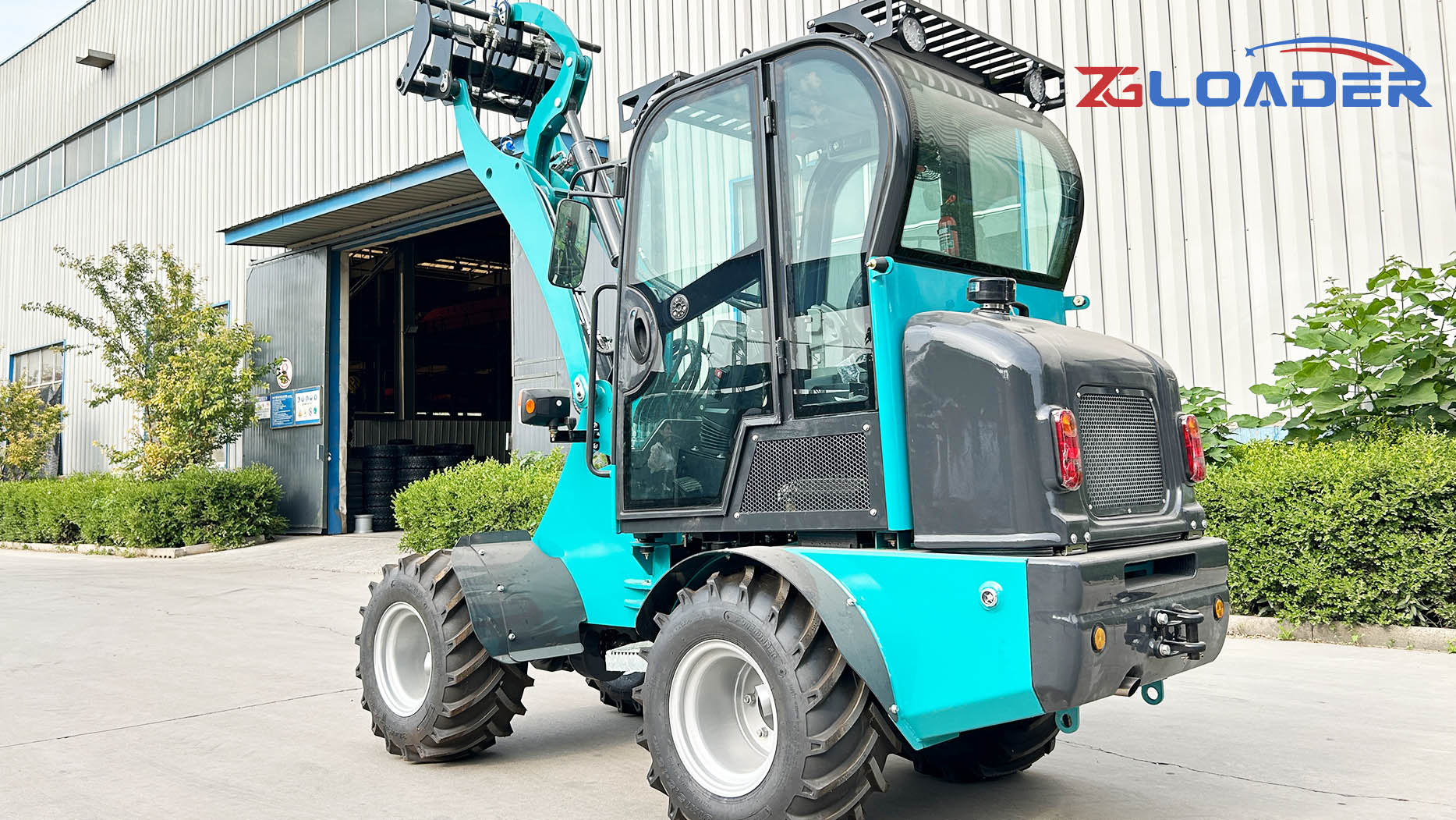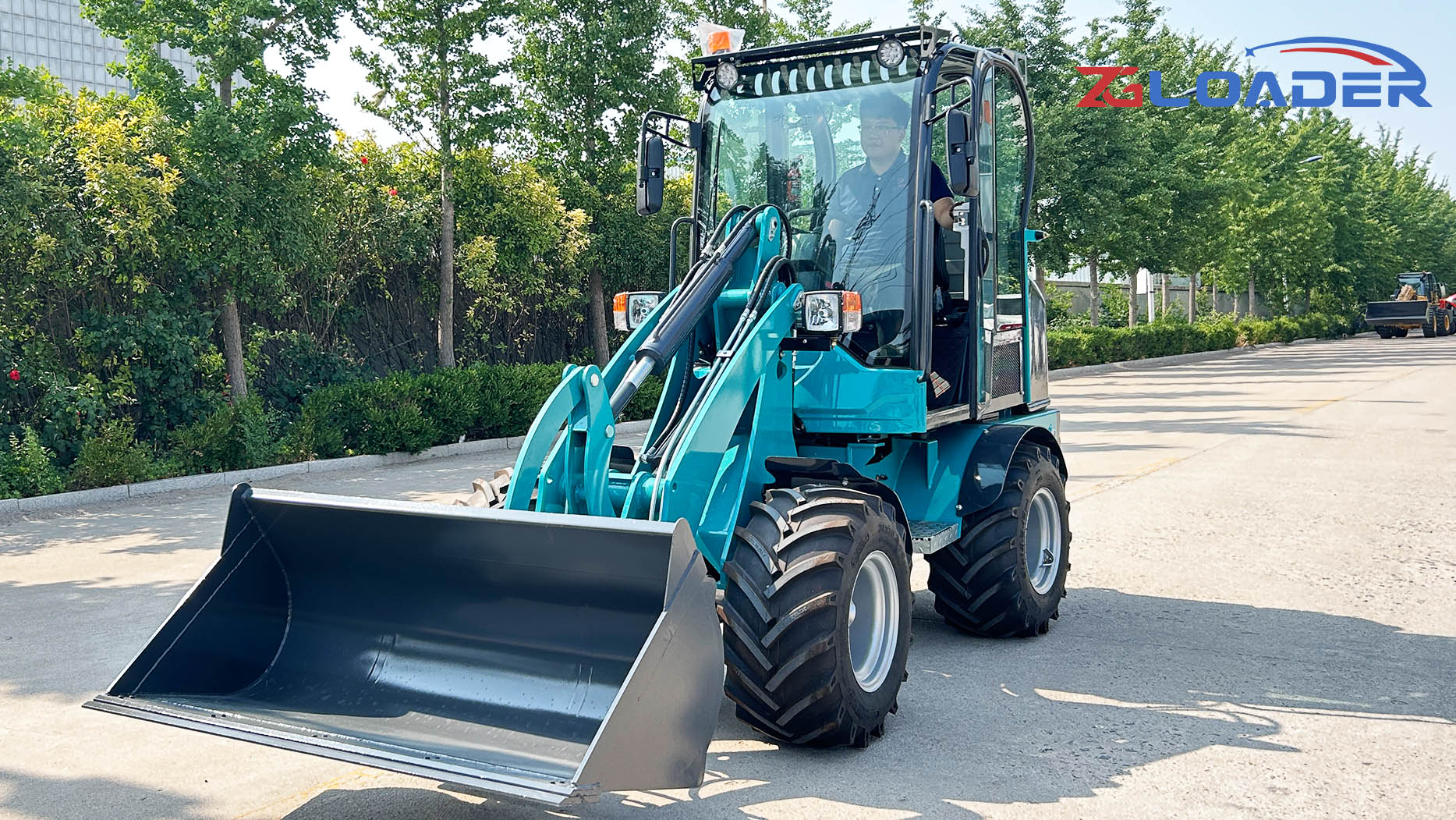When it comes to heavy equipment for moving materials, two common contenders often come to mind: the wheel loader and the track loader. While both machines excel at scooping, lifting, and transporting bulk materials, they are fundamentally designed for distinct operating environments and offer unique advantages and disadvantages. Understanding these differences is crucial for businesses in construction, landscaping, agriculture, and other industries to choose the right machine for their specific needs, ensuring optimal performance, efficiency, and return on investment.
Think of it this way: a wheel loader is like a nimble, fast sprinter, best suited for smooth, stable surfaces and quick movements. A track loader, on the other hand, is a powerful, tenacious climber, built for superior traction and stability on challenging, uneven, or soft terrains. This article will break down the key distinctions that set these two versatile machines apart.
1. Mobility and Traction: Where They Excel
The most significant difference between a wheel loader and a track loader lies in their undercarriage and how they move.
Wheel Loader:
Mobility: Equipped with large, pneumatic tires, wheel loaders are built for speed and agility on hard, stable surfaces like asphalt, concrete, or compacted gravel. They can travel much faster than track loaders, making them ideal for operations that require frequent movement between different areas of a job site or between separate locations (e.g., loading trucks at a quarry and then moving to a different stockpile).
Traction: Their wheeled design provides good traction on solid ground. However, on soft, muddy, sandy, or very uneven terrain, wheeled loaders can struggle, losing traction, digging themselves in, or slipping.
Maneuverability: Most wheel loaders feature articulated steering, where the machine bends in the middle, allowing for a tight turning radius and excellent maneuverability in relatively confined spaces.
Ground Disturbance: They can cause more ground disturbance on soft surfaces dueating to their tire pressure and spinning when traction is lost. On finished surfaces, they can be gentler than tracks but are not without impact.

Track Loader (also known as a Compact Track Loader or Multi-Terrain Loader):
Mobility: Instead of wheels, track loaders utilize continuous rubber tracks. This provides superior flotation and stability across challenging terrains, including mud, sand, loose gravel, snow, and steep slopes. They exert significantly less ground pressure than wheeled machines, allowing them to "float" over soft ground where a wheel loader would sink.
Traction: The large contact area of the tracks delivers exceptional traction and grip, making them ideal for heavy pushing, grading, and working on inclines.
Maneuverability: Track loaders typically use skid-steer steering, where tracks move independently to turn. While capable of zero-radius turns, they are generally slower in travel speed compared to wheel loaders.
Ground Disturbance: Due to lower ground pressure, track loaders cause less ground disturbance and are often preferred for work on sensitive landscapes, turf, or areas where minimizing rutting is crucial. However, aggressive track patterns can damage paved surfaces if not operated carefully.
2. Applications and Best Use Cases
Their distinct mobility characteristics dictate their ideal applications.
Wheel Loader:
Ideal for: High-volume loading of trucks and hoppers on hard surfaces, large-scale material stockpiling, snow removal on paved areas, general construction on stable ground, and operations requiring fast travel between tasks.
Common Industries: Quarries, mines, asphalt plants, recycling centers (on paved areas), large construction sites with good access roads, port facilities.
Example: A wheel loader excels at rapidly scooping aggregates from a pile and dumping them into a waiting dump truck on a concrete pad.
Track Loader:
Ideal for: Excavation in soft or muddy conditions, fine grading and leveling (due to stability), land clearing, demolition on rough terrain, working on hillsides, and jobs requiring minimal ground disturbance.
Common Industries: Landscaping, residential construction, utility work, forestry, agricultural field work, and jobs with varied or challenging ground conditions.
Example: A track loader is the perfect machine for clearing brush and leveling a muddy, sloped backyard without getting stuck or tearing up the ground excessively.
 3. Cost Considerations: Purchase and Operation
3. Cost Considerations: Purchase and Operation
Both initial purchase price and ongoing operational costs differ.
Wheel Loader:
Initial Cost: Generally less expensive to purchase than a comparable track loader of the same lifting capacity, primarily due to the simpler undercarriage.
Operating Costs: Tires are a wear item but typically last longer on appropriate surfaces and are often less expensive to replace than tracks. Fuel efficiency can be higher during fast travel.
Maintenance: Underframe maintenance is typically simpler and less costly.
Track Loader:
Initial Cost: Typically 20-30% more expensive than a similarly sized wheeled machine, primarily because of the complex and robust track system (undercarriage).
Operating Costs: Tracks are a significant wear item and can be costly to replace, especially if operated on abrasive surfaces. Fuel consumption can sometimes be higher due to the increased friction of tracks.
Maintenance: Undercarriage maintenance is more complex and critical for longevity. Track rollers, idlers, and sprockets need regular inspection and replacement.
4. Machine Components and Design Philosophy
Subtle differences in design reflect their intended use.
Wheel Loader:
Frame: Articulated frame for steering (most models).
Visibility: Often higher operator seating position for better visibility over large loads.
Engine: Primarily wheel loader diesel engines, optimized for high power and torque for sustained loading cycles. Brands like MYZG and ZGLOADER offer a wide range of reliable wheel loader diesel models.
Track Loader:
Frame: Rigid frame, steering via differential track speed.
Visibility: May have a slightly lower center of gravity and more direct visibility to the immediate ground.
Engine: Commonly diesel engines, similar to those found in skid steers, balanced for power and the unique demands of track propulsion.
5. Versatility with Attachments
Both machines boast impressive versatility through a wide array of attachments, but some attachments might be more common or effective on one over the other.
Wheel Loader:
Excels with large buckets (general purpose, light material, rock), pallet forks for oversized loads, snow pushers, and sometimes brooms or grapples for material handling. The greater reach of a wheel loader is often beneficial for loading tall trucks.
Track Loader:
Highly effective with digging buckets, grading blades, trenchers, augers, mulchers, and hydraulic hammers. Their superior traction and stability make them excellent platforms for ground-engaging attachments and working on challenging slopes.
 Choosing the Right Loader for Your Needs
Choosing the Right Loader for Your Needs
The decision ultimately boils down to your specific operational environment and requirements.
Choose a Wheel Loader if:
Your primary tasks involve loading trucks, stockpiling, and moving bulk materials quickly on flat, stable, or paved surfaces.
You need speed and efficient travel between work zones.
Ground disturbance is less of a concern, or you operate mainly on hard ground.
Initial purchase cost and tire replacement costs are a higher priority than extreme traction on soft ground.
You can find numerous reliable wheel loaders for sale from various manufacturers, including cost-effective options from MYZG and ZGLOADER that deliver strong performance for general loading tasks.
Choose a Track Loader if:
You frequently work on soft, muddy, sandy, or uneven terrains, or on slopes.
You require maximum traction and stability for pushing, grading, or fine-tuning work.
Minimizing ground disturbance is a critical requirement (e.g., landscaping, working near existing structures).
Your operations involve more digging, demolition, or working in conditions where getting stuck is a major concern.
You prioritize flotation and stability over travel speed.
In conclusion, while both the wheel loader and the track loader are indispensable tools for material handling, they are designed with different strengths. The wheel loader is a master of speed and volume on stable ground, propelled by its efficient wheel loader diesel engine. The track loader is the undisputed champion of challenging terrains, offering unmatched traction and stability. By carefully evaluating your worksite conditions, material types, task requirements, and long-term cost considerations, and by exploring reputable brands like MYZG and ZGLOADER for both types of machinery, you can confidently select the loader that will maximize your productivity and profitability.
Post time:Jun.30.2025
